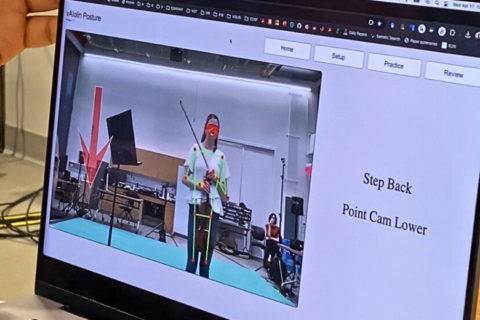This article was republished with permission from WTOP’s news partners at Maryland Matters. Sign up for Maryland Matters’ free email subscription today.
This content was republished with permission from WTOP’s news partners at Maryland Matters. Sign up for Maryland Matters’ free email subscription today.
Maryland policymakers and transit advocates are contemplating a bigger and better future for the state’s MARC commuter rail service. And with billions of dollars eventually heading the state’s way in new federal infrastructure funding, they hope some of their ambitions can be realized in the not-too-distant future.
But it’s also apparent, as lawmakers heard Monday during a virtual briefing on MARC, that several obstacles remain to fully realizing goals for the railroad’s expansion.
And some transit advocates in the General Assembly believe the Hogan administration hasn’t outlined an expansive enough vision for improving commuter rail service. They look grudgingly to Virginia, which is in the early stages of a multibillion-dollar years-long buildup of its commuter rail system, as a model.
“It’s a little concerning that we have so few concrete [rail expansion] projects that are ready to take advantage of these [federal funding] opportunities,” Del. Marc Korman (D-Montgomery), chair of the House Appropriations Transportation & the Environment subcommittee, said Monday.
The panel heard from state transportation officials, regular rail riders and a former top transportation planner in Virginia as part of the discussion on the potential for expanding MARC in the years ahead.
Like most transit systems across the country, MARC has seen its ridership crater during the COVID-19 pandemic: It’s down about 70% since 2019, according to Holly Arnold, administrator of the Maryland Transit Administration, though it’s crept up slightly since Labor Day, when the state restored its regular transit schedules. Overall transit ridership in Maryland, she said, is down about 40%.
But some significant MARC improvements are on the way, Arnold said, and others are on the horizon.
Amtrak is expanding and replacing a commuter rail tunnel in Baltimore that will enable Amtrak and MARC trains to get in and out of the city’s Pennsylvania Station, where delays regularly occur, faster. Related to that project, the state plans to make major improvements to the West Baltimore MARC station, and it will become “a real centerpiece for the community,” Arnold said. Other improvements are coming soon to the BWI, Laurel and Odenton MARC stations.
The state is also examining ways to expand MARC service — to Newark, Del., where passengers could connect to Philadelphia’s SEPTA commuter rail system, and to Alexandria, Va., where passengers could connect to the Virginia Rail Express (VRE) service. A study to expand MARC deeper into Western Maryland is also under way, Arnold said, which will look at the possibility of expanding to Hancock or possibly even to Cumberland.
But every ambitious plan has potential obstacles that are largely out of the state’s hands, officials said. Many of the railroad tracks on the Eastern seaboard are owned by CSX, the freight company, and its needs (and trains) usually take priority over passenger service.
“We are talking to CSX pretty much all the time,” Arnold said.
Maryland can’t contemplate extending MARC service to Delaware until a major expansion at the Newark station that’s now under way is completed, she said. And expansion into Virginia is contingent on VRE approval, cooperation from the public and private entities that operate Union Station in Washington, D.C., and on Virginia completing a new Long Bridge, the common name given to a series of three railway bridges over the Potomac River that connect D.C. with Arlington, Va.
During its hearing Monday, the House panel heard from commuters who rely on MARC service to get to work. Joseph Conny, vice chairman of the state’s MARC Riders Advisory Council, just retired as a federal employee, but said he commuted regularly from his home in Frederick to his job in Gaithersburg by MARC, and found the service far more dependable than taking the state-run commuter bus that travels the same route.
“MARC allows me to reliably reach my destination,” he said. “When driving on [Interstate] 270, you never know if your trip is going to be 40 minutes or an hour and 40 minutes.”
Relatedly, Del. Carol L. Krimm (D-Frederick) has introduced a bill that would enable commuter buses to use highway shoulders at certain times of the day, to alleviate traffic and provide a measure of stability for bus riders.
“Who can use the commuter bus if they have to be at day care at a certain time? Or if they have to be with their children at a certain time?” Krimm said.
Yes, Virginia
Transit advocates regularly cite Virginia’s commitment to expanding passenger rail service as a model that Maryland might follow, and on Monday, the House panel heard from one of the architects of the plan. Virginia is spending $3.7 billion to expand commuter rail service north, south and west of Richmond, the state capital.
Nick Donohue, who until Friday and the departure of Democratic Gov. Ralph S. Northam spent eight years as Virginia’s deputy secretary of Transportation, said the decision to beef up rail service was made after “shocking” studies showed that spending up to $12 billion on expanding lanes along I-95 from roughly Fredericksburg to the Capital Beltway would not result in any reduction in traffic congestion.
As part of the investment to expand rail service in Virginia, Donohue said, the commonwealth is buying 350 miles of rail right-of-way, including 225 miles of existing track, and improving the Long Bridge. He said Virginia has been aggressive about tapping funding sources, securing $944 million from Amtrak, earmarking $900 million from bonds and express lane toll revenues along I-66 for rail, and leveraging millions of dollars in other state bond sources for the project.
“This is something we brought together over a three-year period,” Donohue said, after the commonwealth received some seed money from the federal government. “In our General Assembly, passenger rail is not something that’s a partisan issue.”
As the administration of Gov. Lawrence J. Hogan Jr. (R) pushes a plan to bring toll lanes to the Beltway and I-270 for highway expansion, some lawmakers on the Appropriations panel marveled at the idea that Virginia would use some road funds to pay for transit. And they expressed disappointment that the Maryland Transit Administration is largely contemplating maintenance projects when it comes to spending new federal infrastructure spending — urging the state to be more ambitious.
“We need to think of MARC as more than just a commuter service,” said Del. Jared Solomon (D-Montgomery). “It’s a way to connect all corners of the state.”







